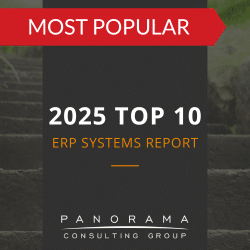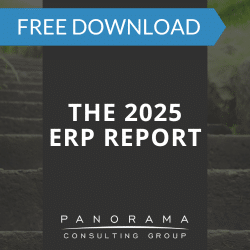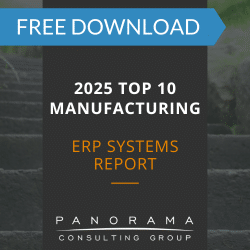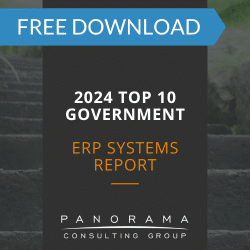- ERP failures are often rooted in early process improvement missteps, not software selection or configuration issues.
- Automating broken processes, excluding key stakeholders, and relying on outdated workflows are common and costly mistakes.
- Lack of process ownership and poor data integrity create roadblocks that undermine ERP success.
- The most effective ERP initiatives prioritize strategic process design, supported by independent consultants and cross-functional leadership.
In theory, process improvement sounds straightforward—identify inefficiencies, streamline workflows, then layer on technology. But in practice, this phase is riddled with cultural, operational, and strategic landmines.
Whether you’re working with an ERP consultant or managing it in-house, the margin for error is slim. Miss the mark here, and your ERP implementation can quickly spiral into costly rework, poor adoption, or worse—total ERP failure.
Today, we’ll look at how to ensure process improvement actually delivers value.
A Failed Payroll System Implementation
Panorama’s Expert Witness team was retained to provide a forensic analysis and written report to the court regarding the failed implementation of a major software developer’s ERP/payroll system.
Common Process Improvement Mistakes
Here are the most common (and most damaging) process improvement mistakes and challenges that derail ERP success:
1. Automating Dysfunction Instead of Fixing It
One of the most costly business process optimization mistakes is rushing to automate workflows that haven’t been critically evaluated.
ERP platforms are good at doing what you tell them to do—but they’re not good at asking whether that thing is worth doing in the first place. If your underlying processes are bloated, fragmented, or redundant, the ERP system will simply reinforce those inefficiencies at scale.
Rather than defaulting to automation, take the time to interrogate how each process contributes to larger business goals.
2. Treating Process Design as a One-Department Job
Process improvement doesn’t belong to IT—or to any single department. Successful process design requires enterprise-wide collaboration and shared accountability. Operations, finance, HR, and supply chain teams all need a seat at the table—and the authority to make decisions that impact how work flows across silos.
Unfortunately, a lack of process integration is one of the main issues our ERP project recovery consultants uncover when reviewing implementations.
3. Depending on ERP to Solve Process Issues
Too often, leaders assume the ERP system itself will handle the heavy lifting of process improvement. This is one of the most widespread process improvement challenges we see, especially when organizations are influenced by flashy demos or vendor claims.
The ERP platform can enable better processes—but only if those processes are clearly defined first.
This is exactly where an enterprise software consultant can offer value: helping you align your operational needs with platform capabilities.
Independent ERP selection is crucial here—because when advice is tied to referral fees, process gaps tend to be glossed over in favor of software features.
4. Ignoring Process Ownership Gaps
Improvement efforts often stall due to unclear ownership. If no one is explicitly responsible for championing a process, decisions get delayed, scope expands, and alignment falls apart.
Whether you’re a mid-sized retail company or a global manufacturer, process ownership issues are often the real source of ERP failure—not technology.
Panorama’s ERP consultants can help flag these risks early and structure a change management strategy around them. We’ve worked with computer software expert witnesses on ERP failure cases, so we know what to look for in terms of root causes.
5. Designing the Future Based on Outdated Assumptions
In legacy-driven companies, process models are often treated as gospel. Teams assume that the current-state documentation is an accurate reflection of how work gets done, when in reality, most maps are years old and bear little resemblance to actual behavior.
Modern ERP strategies rely on real-time visibility—ideally using process mining and behavioral analytics—to uncover the truth about workflows. This clarity helps organizations avoid designing future-state processes that only exist in theory.
6. Underestimating the Link Between Data and Process Integrity
Process optimization often focuses on tasks and roles—but ignores the data flowing through them. This is a blind spot that causes enormous implementation delays.
Poor data integrity undermines automation logic, disrupts workflows, and inflates the time and cost required to stabilize the system after go-live.
Your ERP platform can’t deliver clean outcomes with dirty inputs. If your master data is fragmented, duplicated, or outdated, your reporting will be unreliable. Tackling data governance should be a core part of your process improvement work—not a cleanup phase during implementation.
Learn More About Process Improvement Mistakes
The most successful ERP implementations aren’t driven by technology—they’re anchored in process excellence. And that means building from the inside out, not layering software over dysfunction.
The effectiveness of your ERP system depends on the quality of your business processes. We can help you improve your processes so you can achieve the outcomes you’re expecting. Contact our ERP implementation consultants to learn more.














